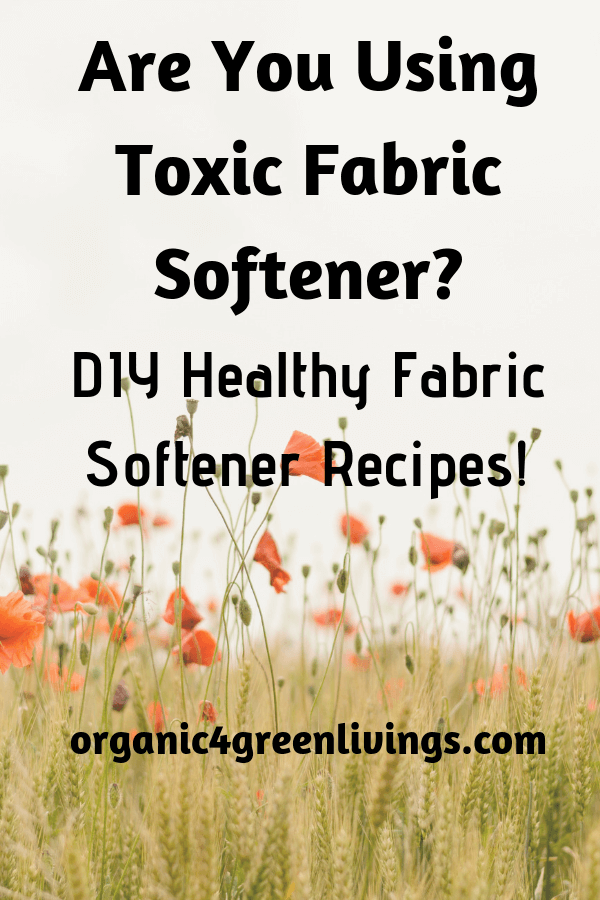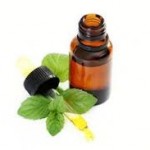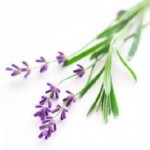Are You Using Toxic Fabric Softeners?
Fabric softeners – awe so soft! But is that softness safe or are we using toxic chemicals and paying a high price on our health and environment? Is there safer and natural ways to soften our clothes without harming our bodies and planet? The answer is “Yes” and I am going to help you find the answers. Living green and healthy, helping to unload the toxic burden on our bodies and environment is so important to our future and our families health.
Fabric softeners work by coating fabrics with a thin layer of chemicals, which makes them feel softer and neutralizes the charge of static cling. These coatings are designed to stay on the fabric for a long time, where they slowly and constantly release chemicals that are inhaled and absorbed through the skin.

Chemical in Fabric Softener– Liquid and Sheets:
- Benzyl acetate: Linked to pancreatic cancer.
- Benzyl Alcohol: Upper respiratory tract irritant.
- Ethanol: On the EPA’s Hazardous Waste list and can cause central nervous system disorders.
- Limonene: Suspected Gastrointestinal or Liver Toxicant, Immunotoxicant, Kidney Toxicant, Neurotoxicant, Respiratory Toxicant, and Skin or Sense Organ Toxicant.
- A-Terpineol: Can cause respiratory problems, including fatal edema, and central nervous system damage.
- Ethyl Acetate: A narcotic on the EPA’s Hazardous Waste list.
- Camphor: Causes central nervous system disorders.
- Chloroform: Neurotoxic, anesthetic and carcinogenic.
- Linalool: A narcotic that causes central nervous system disorders.
- Pentane: A chemical known to be harmful if inhaled.
3 Major Concerns:
- Health Exposure – Allergic reaction, causing rashes, respiratory tract irritation, and constant low-grade exposure to neurotoxic and carcinogen compounds. Causes headaches, nausea, dizziness, blood pressure reduction, and other serious health concerns.
- Flammability – They make fabrics more flammable – especially cotton and terry cloth, like towels and bathrobes, so they should not be used on children’s sleepwear.
- Environmental Exposure – Most of the chemicals in fabric softeners are not easily biodegradable and are hazardous to the ecosystem. Dryer sheets are particularly insidious because the chemicals are heated up and realized inside the laundry room and through the dryer vent into the environment causing more exposure to our bodies.
Most commercial fabric softeners also contain synthetic fragrance that contain many toxins themselves. Even if you are not aware of the effects of these chemicals they are silently poisoning your body and causing much harm to our environment.
I don’t know about you but I know I certainly don’t want to be exposed to all this, in fact I have not used fabric softener in years. I can’t stand to be near someone who has used fabric softener on their clothes – my body reacts to it immediately. My clothes are soft and static free because there are other alternatives that are non-toxic, safe, economical, and biodegradable.
- Vinegar is a good fabric softener, especially for absorbent materials like towels and diapers, as well as for heavy fabrics like blue jeans, but it is not recommended for delicate fabrics such as linen. It dissolves detergent residue and helps to prevent static cling in the dryer. If your worried about the strong odor of white vinegar don’t because it rinses away. Just add 1 cup white vinegar to the rinse cycle.
- Vegetable Glycerin works wonders as a fabric softener. It gives you baby soft clothes just like traditional fabric softener without the toxicity to your body or the environment. — Just mix 1 cup (8 ounces) vegetable glycerin with 1 gallon of water. Add 1/2 cup of the mixture to the rinse cycle.
- If you are an essential oil lover like I am here is an easy and simple DIY fabric softener recipe to make with your favorite scent. My favorite is peppermint.
You can add the essential oil right to the vinegar container and you’ve got instant fabric softener.
DIY Fabric Softener Recipes:
Minty-Fresh Fabric Softener
- 10 drops peppermint essential oil
Combine ingredients and shake well. Add 1 cup to the rinse cycle for each load.
Another great favorite essential oil for many people is Lavender.
Lavender Fabric Softener
- 20 drops lavender essential oil
Combine the ingredients and shake well. For a load, add 1 cup during rinse cycle – for a small load use 1/2 cup.
We all need to do our part in helping the environment and ensuring that we have a safe future for our children, so lets start thinking about all the toxic products such as traditional fabric softener, that you might be using and change them. After all aren’t you worth it? Don’t our children deserve to grow up healthy and strong? By using natural, safe, non-toxic products we are changing the future of our toxic world, one step at a time.
Live Green, Live Natural, Live Healthy & Live Long!




Pingback: 9 Basic Ingredients To Spring Clean Your Home Naturally
Pingback: Easy Natural Cleaning Tips to Prevent Allergies
Pingback: The Chemicals That Dirty Your Cleaning
Hi Marla,
Doing the laundry is such an important part of our housekeeping routines. It is so alarming to learn that fabric softeners are silently poisoning our bodies and causing harm to our environment. Of course, I am not really surprised at this revelation because other laundry and cleaning products contain toxic chemicals as well. It is just so unfortunate! Knowledge is power so thank you for revealing the hazards of commercial fabric softeners and for providing safe, natural, DIY fabric softener recipes at the Healthy, Happy, Green and Natural Party Blog Hop! We will benefit from this!
Hi Deb, Yes there certainly are a lot of toxic cleaning products out there that so many people are unaware of the serious health risks. Glad to be part of Healthy Happy Green & Natural Blog Hop!
Yikes! Scary ingredient lists! I do use vinegar for our cloth diapers but didn’t realize they were a fabric softener…I just like the way the get the smell out. Awesome! We switched over to wool dryer balls with lavender or serenity oil a few months back…it’s been great so far!
Great to hear. Glad you are using non-toxic supplies especially for your baby. Thanks for reading my article and commenting. Have a healthy happy day! Marla
FANTASTIC info. I was just looking into this, since my husband LOVES using fabric softeners and I hate it due to the chemicals! Now I have some non-toxic options to try.
Thanks Brianne – glad that I could help you find a safe non-toxic fabric softener. Have a healthy happy day. Marla
A friend of mine buys Melaleuca products. They have a fabric softener that smells just like downy. It says all natural and that it is scented with EOs, but I never smelled an EO that smells like downy. So, I am still a little leery of it. But it sure did take me back to Downy days.
Thanks so much for sharing on Oil me UP Wednesday. I hope you will be back tomorrow.
Hi Janine, Glad to be part of Oil Me Up Wednesday. Thanks for reading my article and commenting.
Janine,
Don’t be leary, and sorry that your friend did not talk to you about the products. I use them and really love them. They are environmentally friendly, no chemicals or toxins. Biodegradable and they do use essential oils for the fragrance which makes them smell wonderful. The products are the best green products out there that I have used.
I can’t say if they smell like downy as I have never used downy.
If your friend hasn’t spoken to you more and your not a customer already, I would be happy to talk to you about becoming one. I have been a customer for almost five years and I will continue the rest of my life as I believe in the products that much and it’s my part to be environmentally safe.
callie
I use fabric softener with water as a spray-on wrinkle remover. It’s 2 tablespoons to a quart of water, wonder if any of these formulas will work. I’ve never tried vinegar in a spray-on. I’ve used vinegar as a final rinse for decades.
Hi Deanna, I don’t see why they wouldn’t work by spraying them on. Adding a little water might be a good idea too. Thanks for doing your part in helping make this a safer world by not using toxic fabric softener. Have a wonderful healthy day! Marla